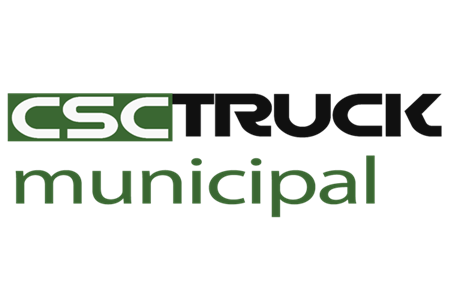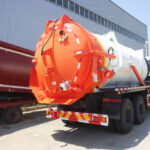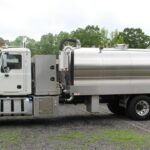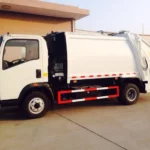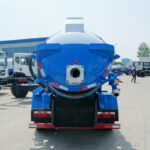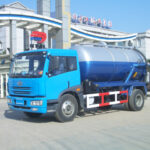Fundamental Design Philosophies – Purpose-Built Engineering vs. Generalized Suction
While both vehicles share chassis similarities and fall under the wastewater management umbrella, their engineering DNA diverges at the molecular level. Standard vacuum sewer trucks prioritize high-volume liquid extraction through negative pressure systems, excelling at emptying septic tanks or clearing flooded basements where homogeneous fluids dominate. Conversely, sewer cleaner trucks confront a far more complex battlefield: hardened sediment layers, root masses, and discarded solids forming concrete-like obstructions within pipe networks. This operational reality demands integrated debris-handling systems featuring dual-stage macerators capable of processing rebar fragments at 1,200 RPM and high-pressure jetting exceeding 3,500 psi—forces that would catastrophically damage conventional vacuum units. The distinction manifests physically through reinforced chassis frames supporting 30% heavier equipment loads and triple-sealed fluid containment systems preventing hazardous aerosol releases during high-turbulence cleaning.
The Sewer Cleaner’s Arsenal – Multi-Modal Contaminant Neutralization
Hydrokinetic Disruption Systems
The core weapon against hardened sewer blockages involves articulated jetter nozzles that propel backwards at 65–85 km/h while rotating 360°, creating hydraulic shockwaves fracturing sedimentary matrices. Modern units like the Vactor 2100i employ computational fluid dynamics (CFD)-optimized nozzles that oscillate pressure between 1,800–3,400 psi at 200ms intervals, inducing resonant frequencies in pipe-scale calcifications. This mechanical agitation synergizes with chemically-enhanced water reclamation systems injecting tailored enzymatic solutions (e.g., cellulose digesters for paper pulp or lipid emulsifiers for grease) into the jet stream, transforming solid masses into pumpable slurries.
Intelligent Debris Management
Unlike vacuum trucks’ passive containment, sewer cleaners feature multi-stage separation chambers where extracted material undergoes cascading filtration:
- Primary cyclonic separation removing rocks and construction debris
- Secondary shaker screens capturing sanitary products and rags
- Tertiary dissolved air flotation (DAF) clarifying wastewater for reuse
This closed-loop process enables continuous 8-hour operations without discharge interruptions—a critical capability during emergency sewer overflows where time-sensitive intervention prevents environmental contamination.
Vacuum Truck Specialization – Precision Extraction in Controlled Environments
Standard vacuum units thrive in scenarios requiring rapid liquid transfer rather than obstruction warfare. Their operational superiority emerges through:
| Capability | Vacuum Sewer Truck | Sewer Cleaner Truck |
|---|---|---|
| Flow Rate | 4,000–6,000 L/min | 1,200–2,000 L/min |
| Maximum Particle Size | 25mm (unmacerated) | 80mm (post-maceration) |
| Tank Material | Single-wall stainless steel | Double-walled HDPE composites |
| Decontamination Efficiency | Basic rinsing systems | Steam sterilization at 140°C |
These specifications optimize vacuum trucks for predictable transfers like lagoon cleanouts or stormwater basin maintenance, where their higher flow rates and simpler mechanics reduce operational costs by 40–60% compared to sewer cleaners. However, this efficiency collapses when confronting the variable composition of mainline sewer blockages, where non-homogeneous debris rapidly clogs intake systems.
Contextual Deployment – Matching Assets to Contamination Scenarios
Sewer Cleaner Non-Negotiables
Deploy specialized sewage trucks when confronting:
- Root intrusion emergencies requiring mechanical cutting and enzymatic dissolution simultaneously
- Sedimentation crises in pipes exceeding 18 months without cleaning, where cement-like layers demand hydro-demolition
- Industrial discharge incidents involving polymerized chemicals or slurry solidification
The 2024 Tokyo Metropolitan Sewerage Project demonstrated this during a 3.2km pipeline collapse, where sewer cleaners’ robotic cutter attachments cleared root masses while vacuum systems handled extracted slurry—a coordinated solution impossible with single-asset deployment.
Vacuum Truck Dominance Zones
Standard units excel in:
- Residential septic tank maintenance with predictable sludge volumes
- Floodwater extraction where debris concentrations remain below 5%
- Scheduled wastewater transfer between treatment facilities
Chicago’s Deep Tunnel Project leverages vacuum fleets for routine inter-reservoir transfers, capitalizing on their superior fluid-handling economics for homogeneous liquids.
Evolving Municipal Fleet Strategy – Integrating Specialized Assets
Progressive municipalities now implement tiered wastewater response protocols aligning equipment with contamination complexity:
Preventive Maintenance Tier
- Vacuum trucks conduct quarterly catch basin cleaning
- Camera inspection units identify early-stage pipe degradation
Crisis Response Tier
- Sewer cleaner trucks deploy with robotic cutters for root intrusions
- Combustion-proof units handle hazardous material spills
The economic wisdom emerges in lifecycle costing: Houston’s 2023 fleet analysis revealed that deploying sewer cleaners for preventive maintenance increased costs by 35% versus vacuum trucks, but reduced emergency repair expenses by 79% by intercepting developing blockages before they escalated. Future-ready agencies now integrate IoT-enabled sewage trucks with municipal GIS systems, automatically routing units based on pipe age, historical blockage data, and real-time sensor alerts from smart manhole covers.
As climate change intensifies urban flooding and aging infrastructure approaches critical failure thresholds, strategic differentiation between these wastewater workhorses transforms from operational preference into non-negotiable public health stewardship—where deploying the right tool at the right moment prevents localized incidents from cascading into municipal disasters.
